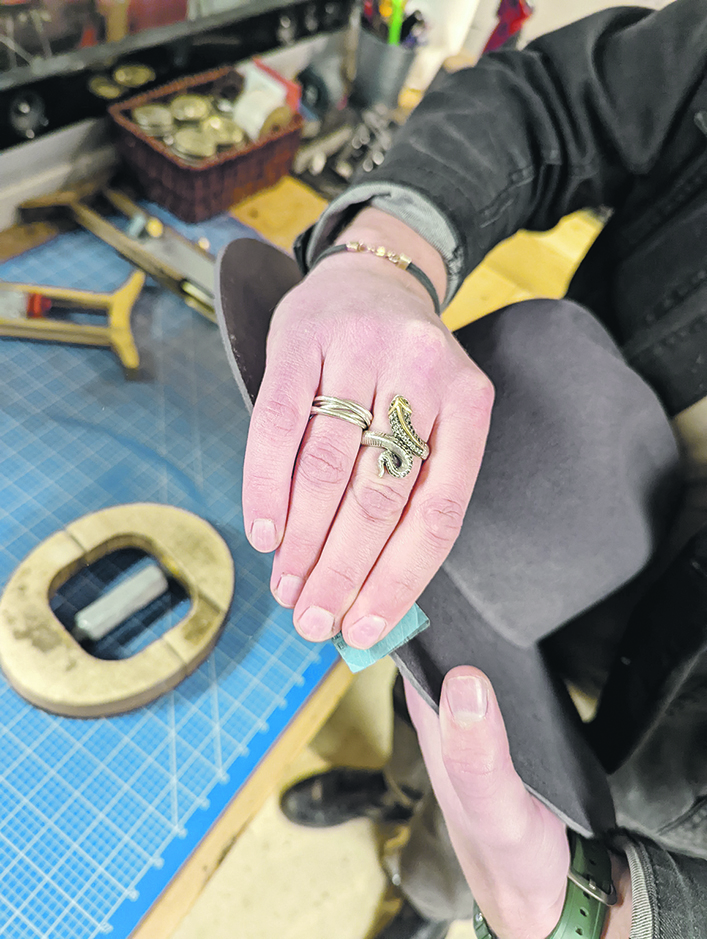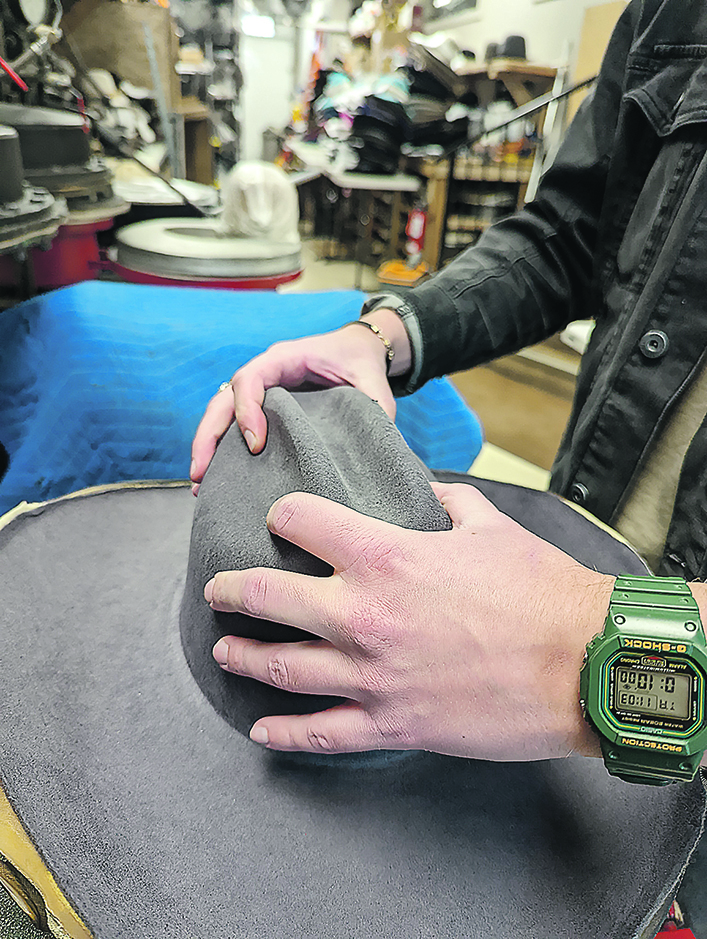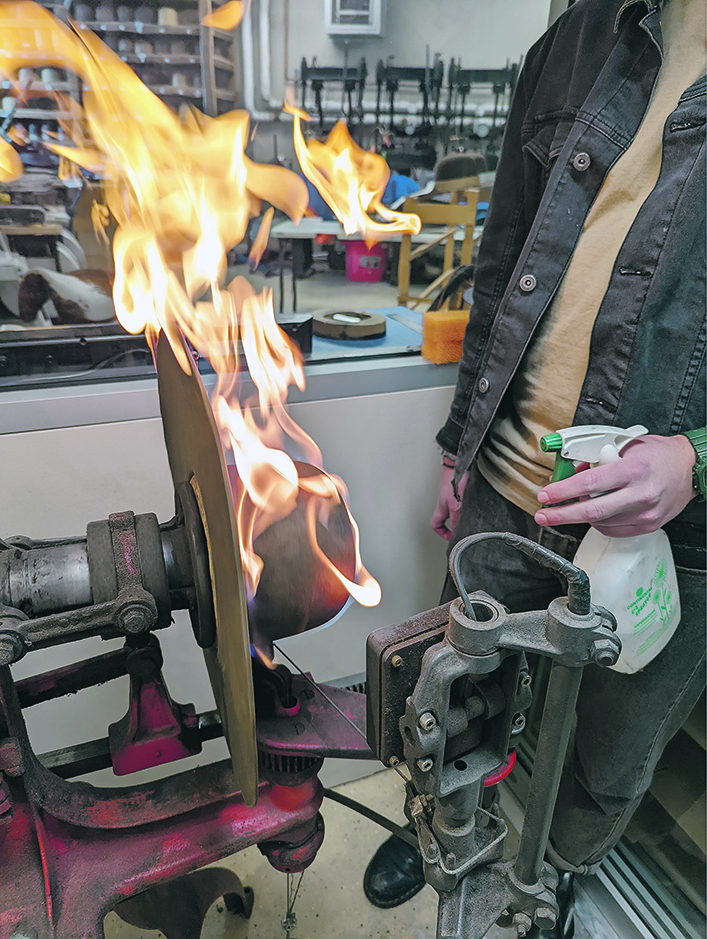‘No two hats are the same’: Calgary company has been making Alberta’s favourite headgear for almost 100 years
“So, how did this happen? Did you have a background in fashion?”
I put this question to Richard Cook, apprentice hatter at Smithbilt Hats Inc. in Calgary.
We’re standing in the middle of hissing machinery in a brightly lit space just a few steps down from the main showroom. Around me, the walls are lined with cast-iron relics that wouldn’t look out of place in the bowels of a turn-of-the-century steamship or Dr. Frankenstein’s lair. I’m giving all of it a wide berth. I don’t need any more scars and I’m going to guess that burns may not be an uncommon occurrence around here.
“How does someone become a hatter, anyway?”
Cook looks at me from behind his wire-rimmed glasses and laughs.
“I didn’t want to be an accountant.”
Smithbilt has been around since a young Russian immigrant, Morris Schumiatcher, bought the Calgary Hat Works in 1910.
Some of the equipment on the floor here now is original; the same pieces that Morris, re-christened Smith on arrival to Canada, would have used as he stretched and shaped mostly fashion hats. It wasn’t until 1926 that the Smithbilt company first made western hats in collaboration with board members of the Calgary Stampede.
Looking around now, Cook flips a switch and steam rises from the finger blocker, a heavy contraption that looks like a cross between a witch’s cauldron and a typewriter. Around the edge of the cast barrel there are dozens of thin “fingers,” rising toward the brim like so many type hammers, each one clamping on to the edge of the wool form Cook has dropped into the centre. It doesn’t look like a hat, the grey form most resembles the rubber nipple of a baby bottle. While steam pushes up from below, the fingers stretch what will become the brim, slowly pulling something more recognizably hat-like into shape. The steam swirls and nearby, one of the hydraulic presses makes a gurgling sound.
“Pressure, heat and water are our bread and butter,” says Cook. “Hat making is simple tools, a simple trade. We could go back to doing it by hand if we had to.”

The past few years have seen big changes at the company. It has moved locations and switched owners and, even as I scrupulously steer clear of anything that looks like it might even be vaguely hot, there is a racket of construction. Men with ladders and heavy-looking tool belts duck in and out while staff and customers move around, pulling hats off shelves, putting hats on walls, shaping hats or chatting in corners. A man walks through the glass doors holding a boater-style hat in his hands. Its red, white and blue band looks bright and fresh under the lights.
Cook gets to work at the shaping table, turning the hat this way and that over a jet of steam, shaping and pulling the hat until it properly fits the customer’s head, tipped at a saucy angle and ready for an upcoming 1920s-themed garden party.
As the happy customer leaves, Cook gives a wink.
“A lot of people don’t have straight heads, you know,” he says.
We make our way back to the workroom where Cook plants me in front of one of the hydraulic presses, a throne-like mystery of valves, plates, pipes and levers. He walks me through working my wool form onto the die, pushing it down at the crown, and shows me how it will be forced into a cattleman, the most popular style of western hat Smithbilt makes. Gingerly flipping the hat-and-die combo onto the saddle of the press, I push the whole thing back and reach up, grabbing the lever that will sandwich my project hat into shape.
“It’s like spinning the big wheel on The Price is Right.”

I wheeze once I’ve managed to muscle the lever into submission. With the timer set for a minute, Cook moves on to some of the other hats on racks in varying degrees of doneness. There are beaver hats, rabbit hats, wool hats and combinations. There is even a bespoke, made-to-order mink hat, the very finest hat Smithbilt makes.
Back in the showroom, a couple is waiting by the shaping table. A black, wonky-looking cowboy hat is clamped to the man’s head. He’s come to have it restored, another service that Smithbilt offers for any high-quality hat, whether it made it or not. This one is beaver and its owner tells me he wore it for years while he worked on ranches in British Columbia.
“It used to be that you could tell by the crease which ranch someone came in from,” says Cody Harrison, master hatter. “Hats can be a little tribal.”

For the people who wear these hats every day, like the retired man in front of me, the money gets spent on the every day hat, the hat that gets knocked off, run into the mud, rained on, thrown on to dashboards. This is the hat that has to last, explains Harrison.
Town hats, worn once a week, get a lot less attention. This particular example has clearly seen its share of wet weather and high heat. And while restoring old hats is rewarding, it’s not without challenges.
“The smell,” Cook confides. “Everywhere a hat’s been, everything a hat’s done, it all comes out when we steam it.”
From the hydraulic press, to the big irons, to the trimming board and on to selecting a band, the cattleman hat I’m building is taking shape, becoming something recognizable and even — against all odds considering my involvement — desirable.
Kim Trang, seamstress, smoothly attaches a woven band on to the brim break. We’re ready for the shaping table now.

For anyone wanting to wear a western hat properly, Cook says any kind of colour or shape is acceptable — self-expression is welcome. There are only two rules.
“Buckles go on the left, same side as your heart. And Labour Day is the end of straw season.”
“Every hat has a story,” says Cook, holding up my new headgear, which has now become a bona fide, authentic cattleman. He runs his finger across the new curve in the brim.
“No two heads are the same, no two hats are the same. Each one is as unique as the person wearing it,” he says.















